Changed fortunes: Hawthorn’s rise from VFL easybeats to an AFL success story
Hawthorn spent decades as one of the VFL’s perennial cellar dwellers until it won the first of its 13 flags in 1961. How did Hawthorn go from league loser to solid gold success?
Hawthorn
Don't miss out on the headlines from Hawthorn. Followed categories will be added to My News.
From perennial cellar dwellers to one of the most successful clubs in VFL/AFL history, Hawthorn has had an incredible run of success since its first grand final win in 1961.
But there were decades of pain to endure before the Hawks tasted premiership victory.
ORIGINS
Football teams have been a part of the Hawthorn area since 1873, with several forerunners from different parts of the area taking the name Hawthorn then disbanding up until 1898.
MORE FOOTY
THE BAROMETER: CLUB LISTS, INJURIES EXAMINED
RARE FOOTAGE: AUSSIE RULES AS IT WAS
The modern club did not exist until 1902, when Alf Kosky moved to form a team from existing sides around Hawthorn to play in the Metropolitan Junior Football Association, a feeder competition to the VFA and VFL.
The new team played its home games at St James Park and wore a dark blue guernsey with red and white braces, shifting to Richmond Racecourse and the Punt Rd Oval before merging with Boroondara in 1905, adopting their black guernsey with red sash and settling at Glenferrie Oval in 1906.
The team merged again with the Hawthorn Rovers in 1912, adopting the Rovers’ blue guernsey with a gold V, and two years later applied successfully to join the VFA.
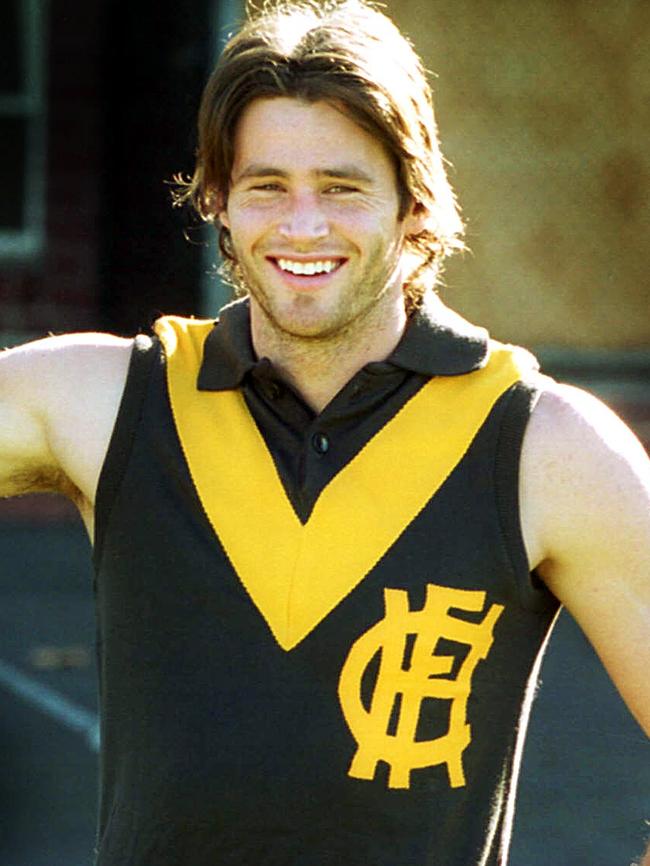
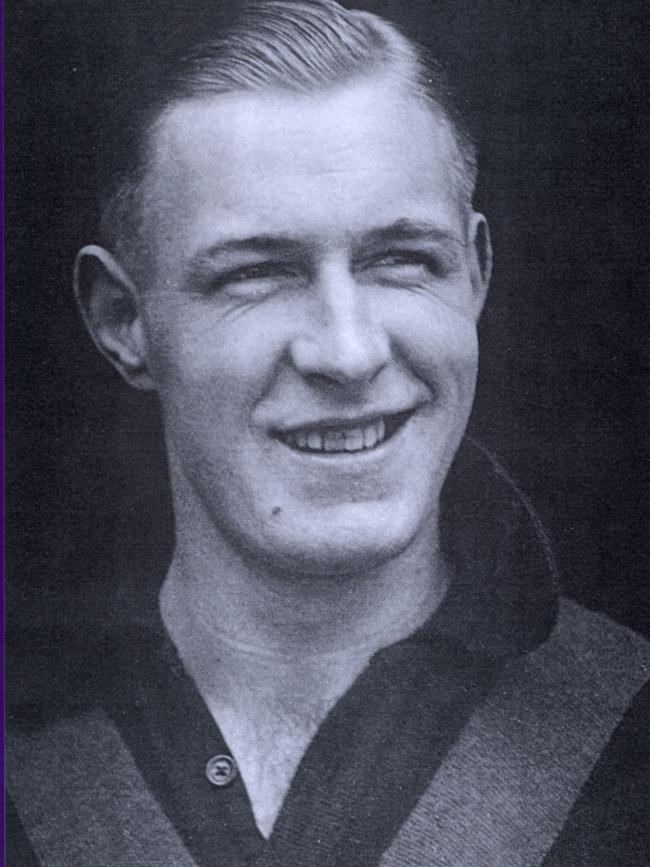
But Williamstown already played in blue and gold. The Mayblooms’ guernsey became brown with a round yoke and gold “HFC” initials.
Hawthorn won three games and had a draw in its first season but won the wooden spoon in 1915.
The VFA went into recess from 1916 to 1918 and resumed in 1919. Under coach Bert Walton, the club became more competitive, setting a then-VFA/VFL record winning score of 30.31 (211) against Prahran 6.9 (45) and making its first finals appearance the following year.
Then, along with North Melbourne and Footscray, the Mayblooms were admitted to the VFL.
GOLDEN YEARS
Hawthorn never won a premiership in the VFA, and were the easybeats of the VFL for decades following their debut in 1925. The new VFL team tasted victory in 1925 but went winless in 1926
Playing in a new brown guernsey with a gold V and the “HFC” initials on the left breast, the side won no more than seven games in any season between 1925 and 1942.
HOW YOUR VICTORIAN AFL TEAM GOT ITS COLOURS
There were some highlights along the way. Jack Green kicked 80 goals for the Mayblooms in 1934 — a club record until Peter Hudson kicked 125 in 1968 — and Ted Pool played his 200th and last game for Hawthorn in 1938, the first player to reach the mark. Alec Albiston was the first player to kick a bag of 10 goals in the opening round of the 1940 season against North Melbourne.
EARLY STRUGGLES
Still, it took Hawthorn until 1940 to notch up its first away wins against Carlton and Richmond, 1942 to beat Collingwood at Glenferrie Oval, 1951 to notch up its 100th win in the competition and 1960 to beat the Magpies at Victoria Park.
And it won all 11 of its wooden spoons between 1925 and 1965.
Hawthorn attracted former Swans ruckman Roy Cazaly as a coach in 1942, and in 1943 he gave the Mayblooms a new, edgier nickname at the suggestion of his daughter — the Hawks.
They had their best VFL season since joining the league in 1943, missing the finals on percentage, but Cazaly left and the Hawks continued to bumble along.
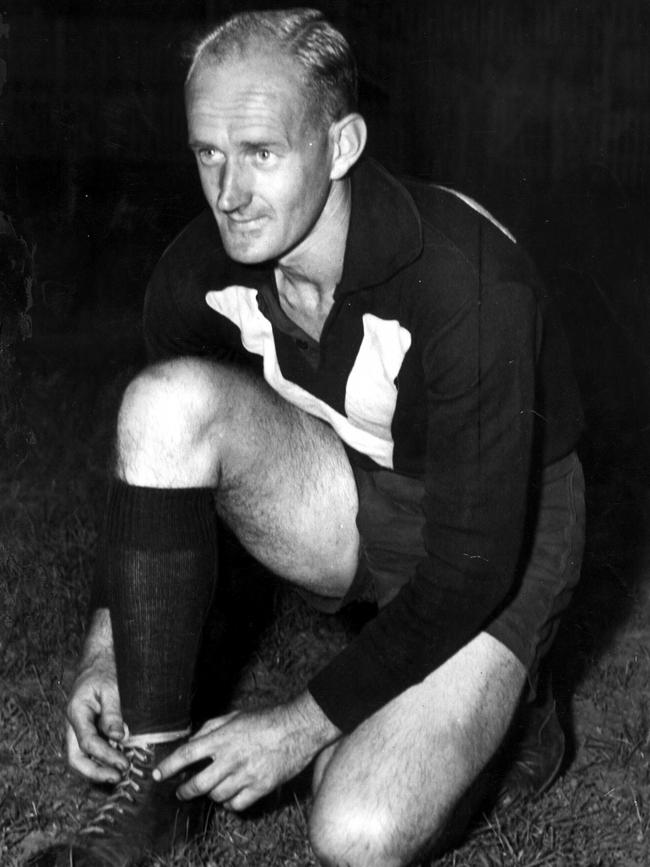
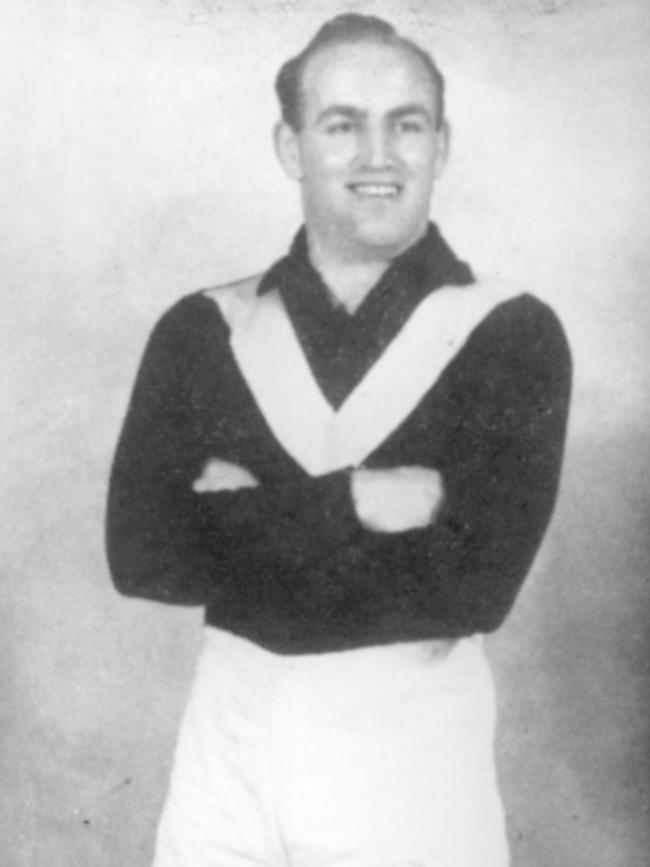
A bitter split over the captaincy unfolded in 1949. Albiston was relinquishing the captain — coach role with Bob McCaskill to coach. Albiston was assured by a committee member that he’d retain the captaincy, but McCaskill favoured Kevin Curran. Albiston walked, along with champion Col Austen, who lost the 1949 Brownlow Medal on a countback (it was awarded to him finally in 1989).
The club took on a new look in 1950 with its now familiar brown and gold stripes. It was also the year John Kennedy Sr debuted for the Hawks.
TURNING POINT
Jack Hale was appointed as coach in 1952 and he is credited with giving the Hawks a tougher and much more professional attitude to the game, and with recruits including Graham Arthur, Brendan Edwards and John Peck, things started to look up. The side made its first finals appearance in the VFL in 1957 and was more competitive as the 1960s dawned.
Kennedy Sr retired in 1959 and became coach the following season. Hawthorn won 12 games on the trot to win the 1961 grand final against Footscray by 43 points, with Morton Browne booting three goals and Kennedy Sr and captain Graham Arthur cementing their place as club legends.
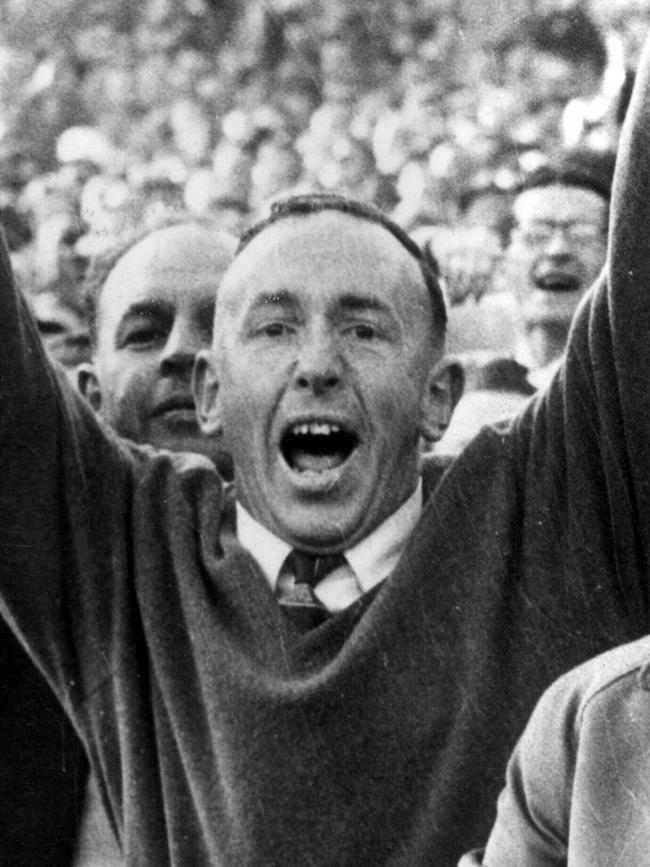
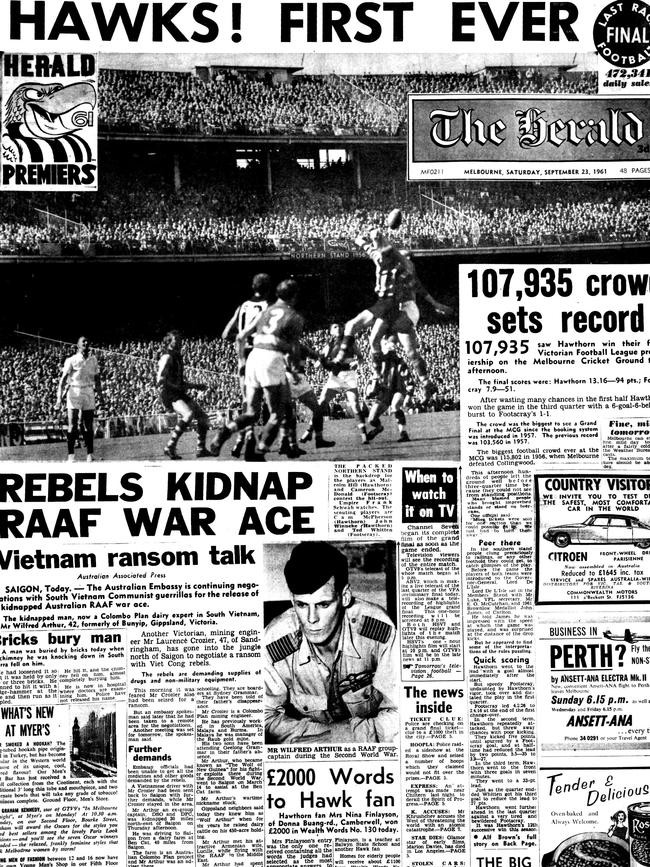
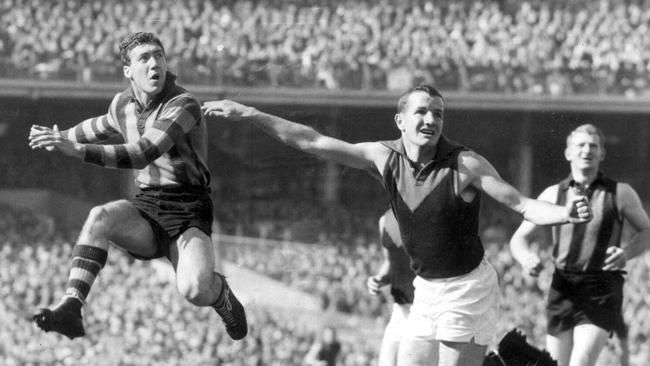
The club was ninth in 1962 and runner-up to Geelong in 1963, when Kennedy Sr left the club, replaced by captain-coach Arthur, but the Hawks slipped to last in 1965.
Kennedy Sr returned for 1966. Peter Crimmins also joined the side, and gun full forward Peter Hudson arrived from Tasmania, with Don Scott a local recruit. The Hawks were on the rise again.
Greats Leigh Matthews and Peter Knights joined the Hawks in 1969 and, by 1971, Hawthorn was back in the grand final again.
SUPERCOACH: THE KEY JLT PERFORMERS
It was the team’s most successful season. Led on the field by captain David Parkin, the Hawks won 21 out of 24 games, with Peter Hudson equalling Bob Pratt’s record of 150 goals in a season before the side trounced St Kilda with a come-from-behind seven-point victory.
Huddo suffered concussion after two early goals in a clash with Kevin “Cowboy” Neale and had double vision, managing only one more goal for the match to equal Pratt.
In the final quarter, Kennedy Sr moved Bob Keddie to full forward. Keddie kicked four goals in 16 minutes, with singles to Scott, Matthews and Crimmins in the final term, to seal the match.
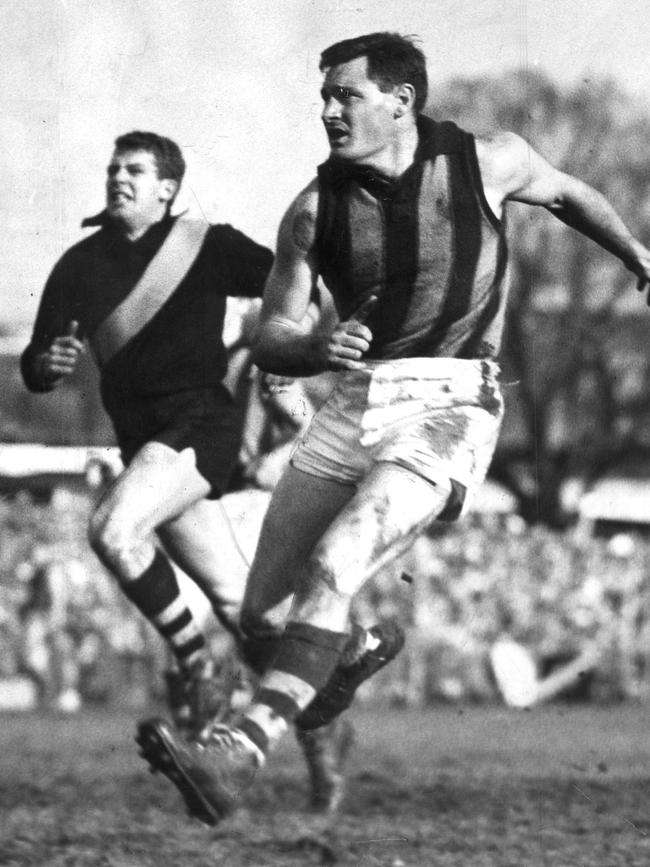
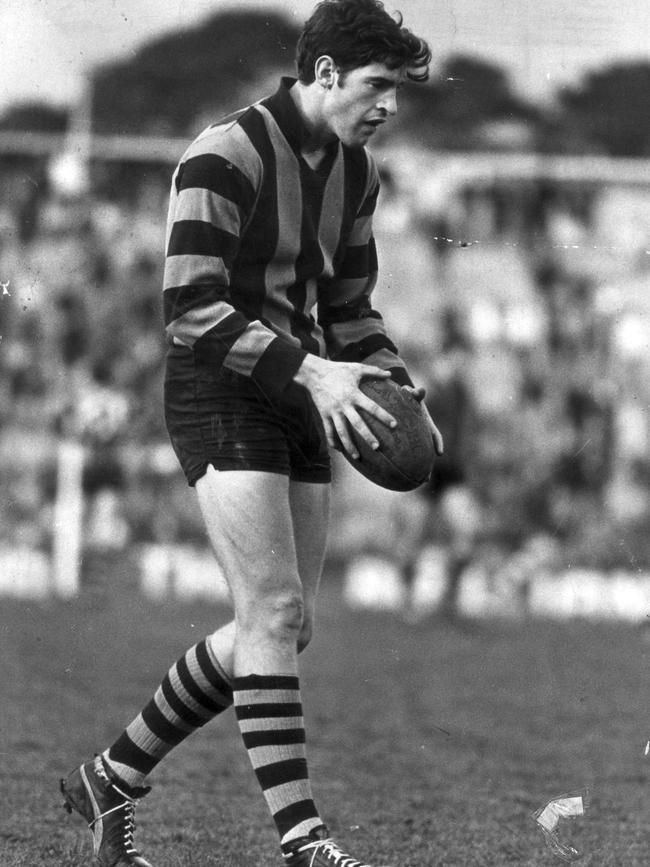
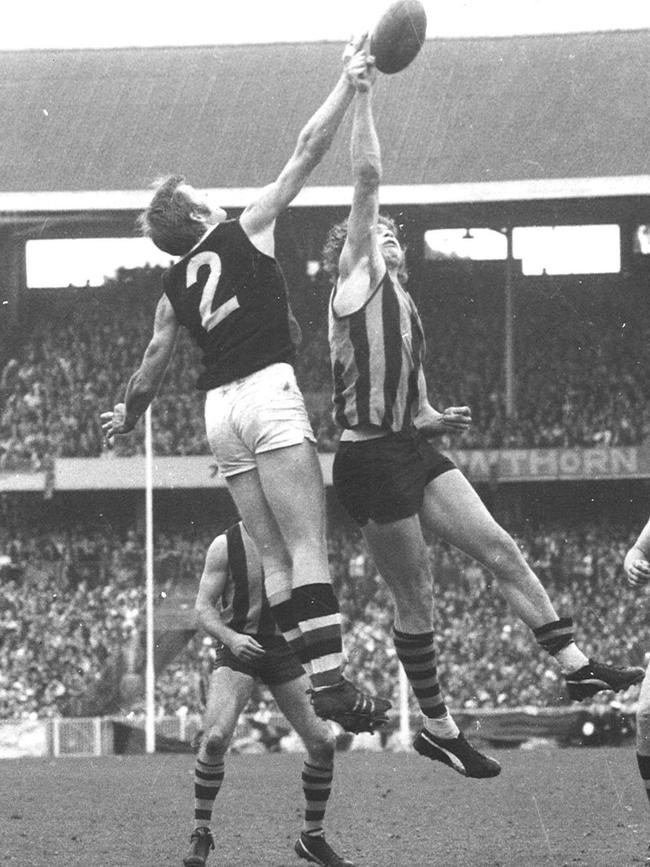
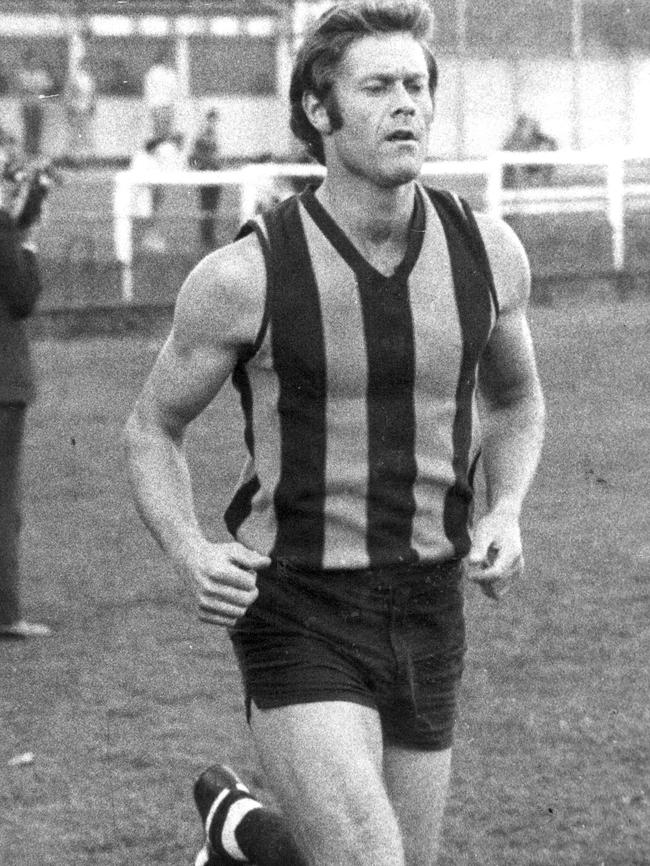
If 1961 was the start of Hawthorn’s premiership flow, 1971 opened the floodgates.
Hawthorn became co-tenants with Carlton at Princes Park in 1974. The Hawks appeared in the grand final again in 1975 against North Melbourne but without Crimmins, who was the captain but had been diagnosed with testicular cancer and was not selected despite declaring himself fit to play after extensive treatment.
CRIMMO’S CUP
Crimmins never again played for Hawthorn. He died just three days after the Hawks’ 1976 win over the Kangaroos, aged 28.
Crimmins could not attend the game and, with live TV coverage a year away, had to listen on the radio. He had sent a telegram to Kennedy Sr, which the coach Sr read to the team before the match. It read: “Good luck to you and all the boys. It will be a long, hard, 100 minutes but I am sure you will be there at the end. Regards, Peter Crimmins.”
Kennedy Sr told his players to win the flag “for the little guy” and dedicated the game to him.
Michael Moncrieff, Leigh Matthews and Peter Knights starred in a team that included Geoff Ablett, Terry Wallace, Rodney Eade and Michael Tuck.
Six of Crimmins’ closest teammates visited him at home with the silverware on the night of the historic win.
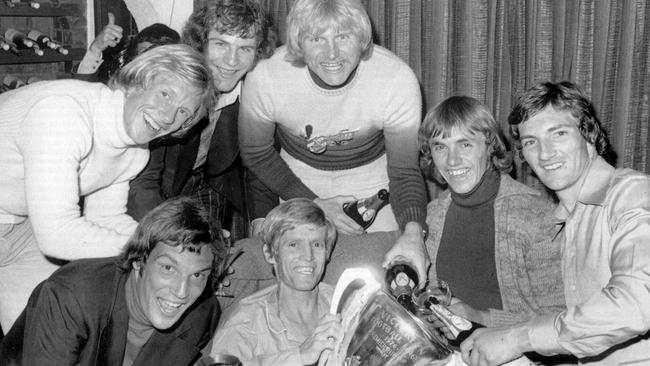
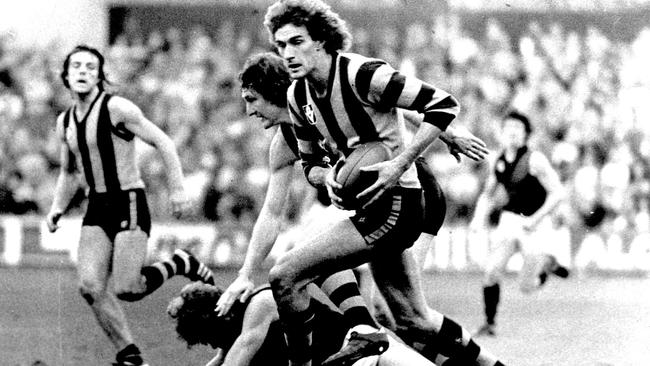
Hawthorn’s third flag came in 1978, against North again. Four each from Matthews and Moncrieff, three from Scott and two from Knights proved decisive against Ron Barassi’s Kangaroos. Robert DiPierdomenico made his first grand final appearance that day.
And then came the ‘80s, the decade in which Hawthorn played in seven straight grand finals, winning four.
In 1983, Leigh Matthews kicked six, with nine other players booting at least one goal to defeat Essendon by a thumping 83 points. Colin Robertson was the Norm Smith Medallist that day. It was Allan Jeans’ first flag as coach, while it was Dermott Brereton’s first grand final.
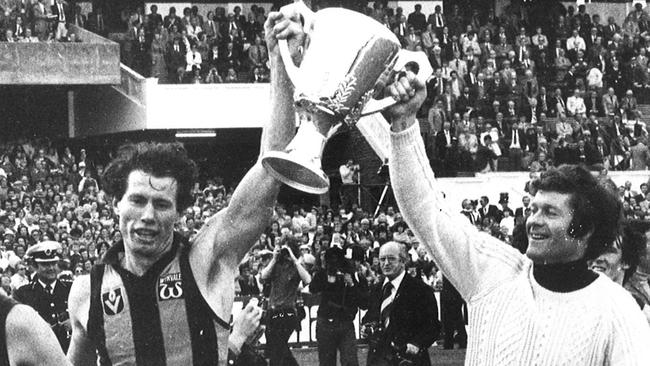
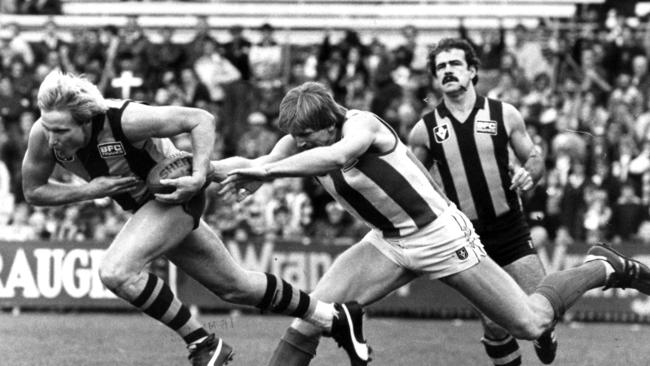
The Hawks went down to Essendon in 1984 and ‘85, the latter Matthews’ last match.
But the Hawks defeated Carlton in 1986 by 42 points with a side that included Norm Smith medallist Gary Ayres, Peter Schwab, Brereton, DiPierdomenico, Tuck, Wallace, Eade, Garry Buckenara, John Kennedy Jr (the former coach’s son), Jason Dunstall and John Platten.
Dipper became the Hawks’ first Brownlow winner before Col Austen got his retrospective medal in ‘89,
The side went down to Carlton in 1987 but smashed Melbourne by a then-league record 96 points. Ayres won his second Norm Smith Medal and Dunstall booted seven goals, Paul Abbott six and Brereton five in the victory. Allan Joyce, who filled in for Jeans for a year, coached the team.
PREMIERSHIP DOUBLE
The Hawks went back to back against Geelong in ‘89 in a bruising encounter in which Cat Mark Yeates cleaned up Brereton at the start of the match, causing broken ribs and a bruised kidney. John Platten was concussed in another clash, Dipper played with two broken ribs and a punctured lung and captain tuck split the webbing in his hand.
Hawthorn had a 37-point lead at half time but Geelong came home with a wet sail in a free-scoring second half. The Cats fell to the Hawks by just six points despite Gary Ablett’s nine-goal bag for Geelong.
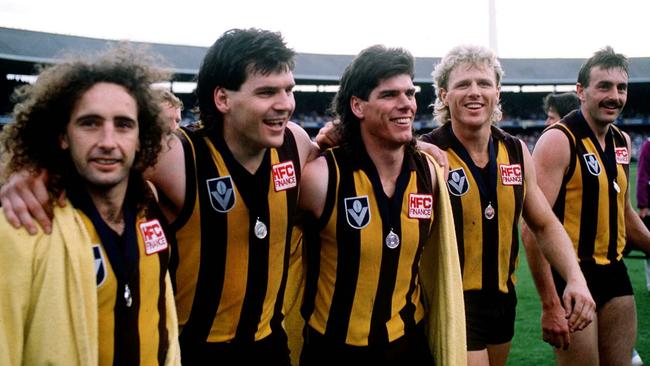
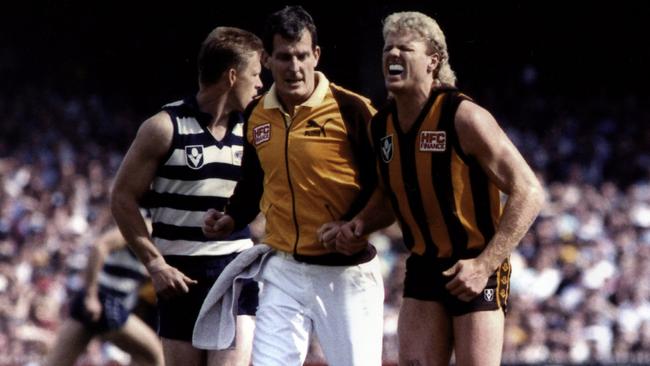
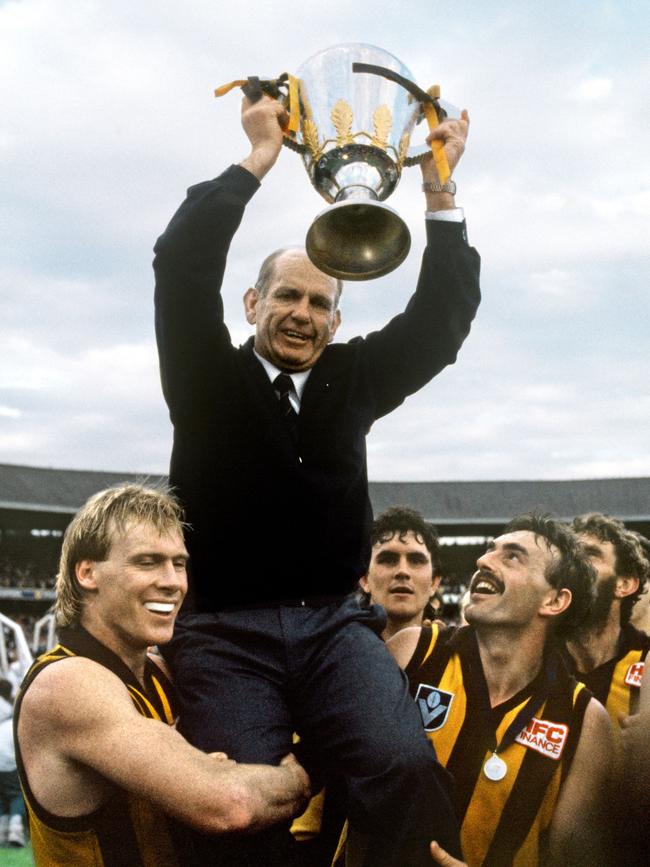
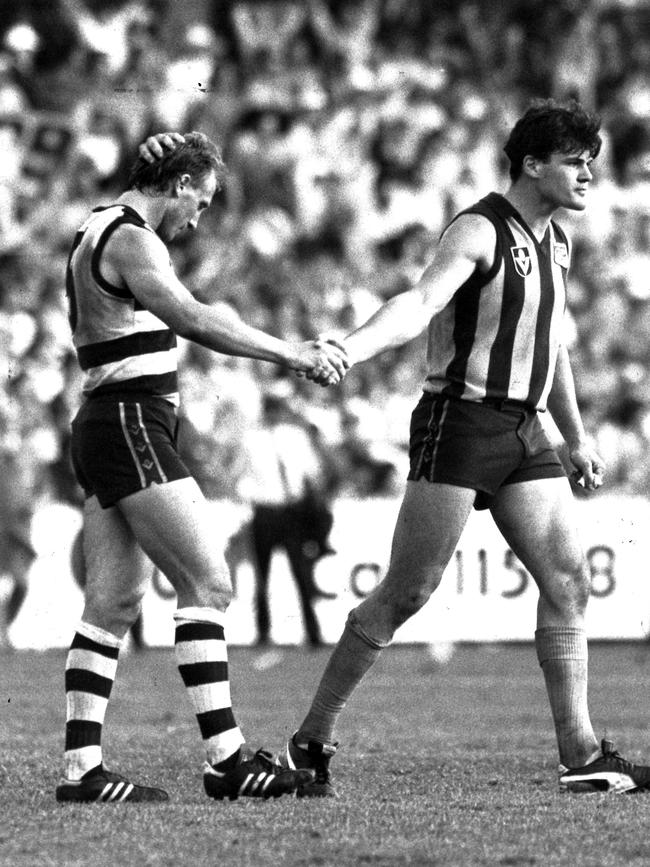
THE AFL ERA
The Hawks started the AFL years in the right frame of mind, defeating West Coast in the 1991 grand final, with Joyce now full-time as coach.
This was the end of an era. It would be another 17 years before Hawthorn graced the MCG turf on grand final day. Tuck retired after 426 games, 39 finals, 11 grand finals and seven premierships.
Dipper, Brereton, Ayres, Chris Mew and others retired or drifted away and, although Darren Jarman, Paul Dear, Dunstall, Platten, Chris Langford and Shane Crawford kept the Hawks competitive, Hawthorn’s run of 13 straight finals series — an AFL record — ended in 1994.
Princes Park was abandoned for Waverley Park in 1992.
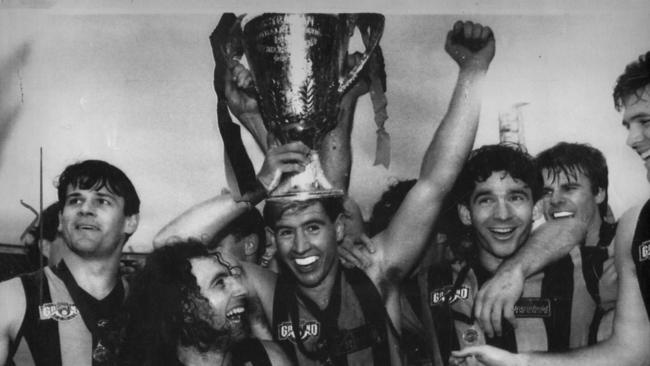
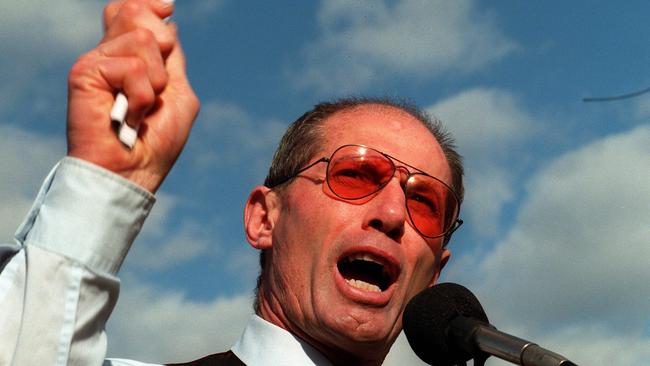
Financial fortunes were so low that in 1996 there was a proposal for Hawthorn to merge with Melbourne, which was defeated by Don Scott’s Operation Pay Back.
Hawthorn switched from Waverley to the MCG in 1999, the year Crawf won his Brownlow, with some home matches played at York Park in Launceston from 2001.
Alistair Clarkson took over as coach in 2005.
In 2008, Hawthorn defeated Geelong to claim its 10th flag, this time over old rivals Geelong by 26 points. Luke Hodge was judged best on ground with Campbell Brown, Xavier Ellis, Cyril Rioli, Crawford, Stuart Dew, Michael Osborne and Brad Sewell among the leaders on the day. Lance “Buddy” Franklin was quiet on the day but helped steer the team to the win with a 102-goal haul that year.
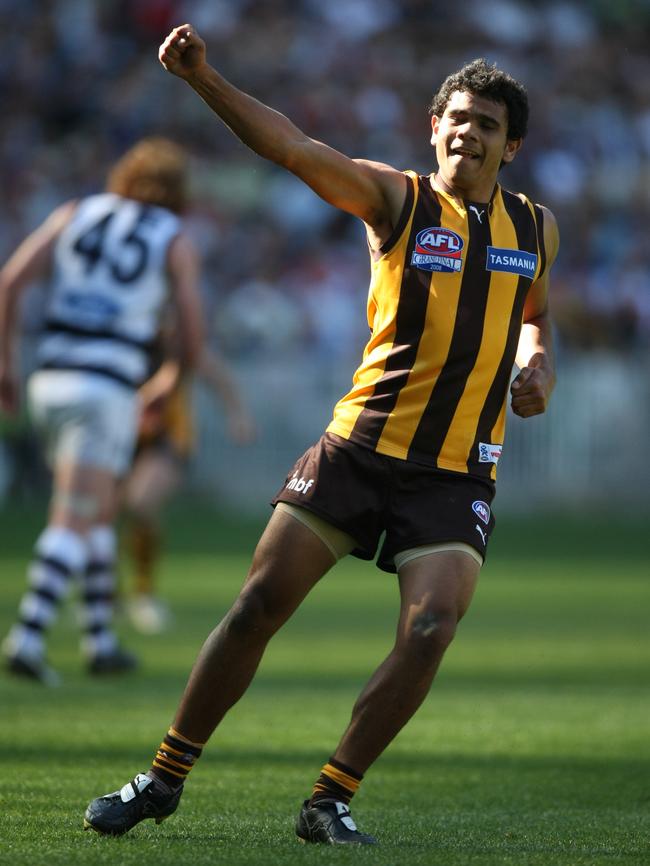
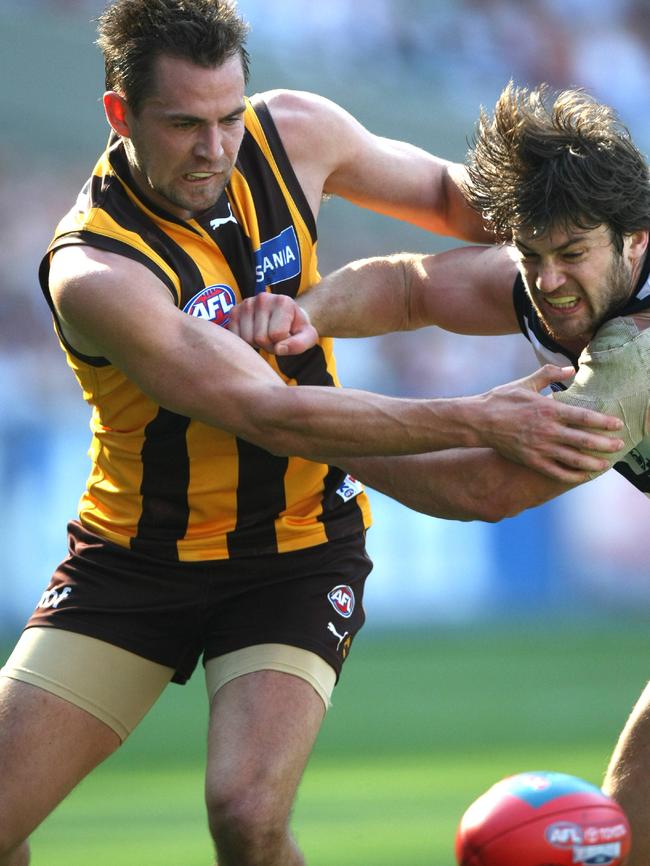
The Hawks lost to Sydney in 2012 but managed three in a row from 2013 to 2015, the club's greatest grand final streak, beating Fremantle by 15 in 2013, Sydney by a whopping 63 points in 2014 and West Coast by 46 points in 2015.
The nucleus of the side included Hodge (Norm Smith medallist in 2014 as captain, Jarryd Roughead, Rioli (2015 Norm Smith winner), 2013 Norm Smith winner Brian Lake, Luke Breust, Sam Mitchell and Shaun Burgoyne,
The team made the finals in 2016, plunged to 12th in 2017 and finished fourth last year.
The Hawthorn faithful will be keen to see a repeat of the form that’s delivered the Hawks three premierships this decade.
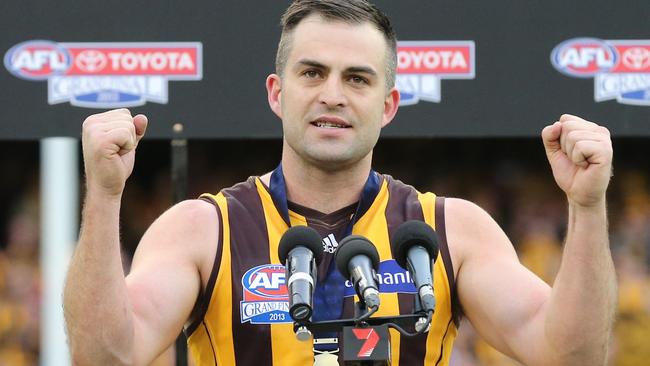
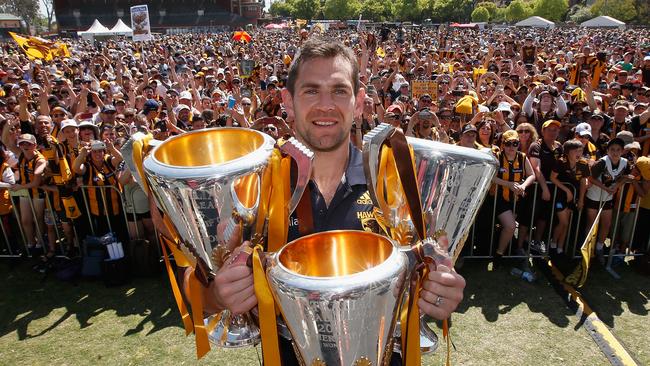
HAWTHORN
VFL/AFL Premierships: 13 (the last in 2015), runners-up six times
VFL/AFL games played/won/lost/drawn: 1930 matches played, 947 won, 973 lost, 10 drawn
Longest serving captain: Graham Arthur (153 games, 1960 to 1968)
Longest serving coach: Alastair Clarkson (305 games since 2005)
Longest serving player: Michael Tuck (426 games, 1971 to 1991)
Most goals: Jason Dunstall (1254)
Brownlow medallists: Col Austen (1949), Robert DiPierdomenico (1986), John Platten (1987), Shane Crawford (1999), Sam Mitchell (2012)


